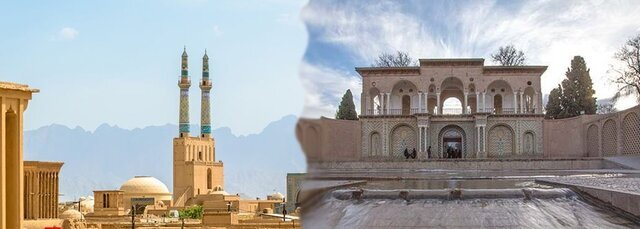Kerman, Yazd can turn into important Asian tourism hubs, expert says

TEHRAN— The Iranian cities of Kerman and Yazd can turn into two important tourism axes of Asia, said the director-general of the Domestic Tourism Development Office.
Speaking at a joint gathering of Tourism Commissions of Kerman Chamber of Commerce and Yazd Chamber of Commerce, which was held in Kerman on April 26, Mostafa Fatemi added that the story of Yazd and Kerman is like Samarkand and Bukhara. These two ancient cities can work as a tourism axis together, he said.
“We are working in the Ministry of Cultural Heritage, Handicrafts and Tourism on the Yazd-Kerman tie. One way is Spice Road which is older than Silk Road. The other axis is Marco Polo crescent route which goes to Kuhbanan and south of Kerman from Yazd, returns Kerman and goes off the other path. We are working on these two key axes as a tourism brand.”
Pointing to the number of foreign tourists in Kerman, Yazd and Isfahan before coronavirus pandemic, he said some events occurred in Kerman, leading to reduction of tourist arrivals.
Fortunately, Kerman has witnessed rise in number of tourists in recent years, he said. “The provincial officials are determined to return Kerman into its brilliant status. Definitely, with public participation, the future years will be prosperous time for everybody.”
He said private sector is the driving force behind mobility, dynamism, and forward movement. “We had 1,750 renovation projects during 2021. The private sector took part and the work was done.”
Kerman has enough assets to return to its peak days on its own, he said.
He continued that National Ecotourism Festival would be held in Kerman in May 21, adding 700 ecotourism sites from different ethnic groups would take part in the upcoming event.
Next Iranian year will be the year to travel Kerman province in light of holding this event and measures being done in Kerman, he said.
Kerman is a vibrant testament to centuries of cultural fusion and heritage. Nestled in the country's southeastern part, Kerman has been a cultural melting pot since antiquity, blending Persians with subcontinental tribal inhabitants. This confluence of cultures has enriched the city with diverse traditions, architectural marvels, and a unique way of life that continues to captivate visitors today.
The city is home to numerous historical sites and scenic landscapes that offer an unforgettable journey through time. The Bazaar-e Sartasari, one of Iran's oldest and longest covered bazaars, is a bustling hub of commerce and culture where travelers can experience local crafts, textiles, and spices. The ancient Jabalieh Dome, a mysterious octagonal structure made of stone and gypsum, showcases the city’s architectural ingenuity. Additionally, the Ganjali Khan Bathhouse, an exquisite example of Persian bathhouse architecture, reflects the artistic heritage and sophisticated urban planning of the Safavid era.
Moreover, Kerman’s appeal extends beyond its architectural wonders to its natural beauty, which includes the stark and captivating landscapes of the Shahdad Desert. Known for its stunning Kaluts—geological formations shaped by wind erosion—the desert provides an otherworldly experience that attracts adventurers, photographers, and nature lovers alike. The surrounding mountains and oases add to the city’s diverse topography, making Kerman a unique destination where history, culture, and nature converge.
Kerman’s cultural heritage is not only preserved in its monuments and natural landscapes but also in its vibrant traditions, including music, crafts, and cuisine. From traditional carpet weaving to the preparation of unique local dishes, the city offers a deep dive into the rich Persian culture that has been shaped by its historical crossroads.
KD
Leave a Comment